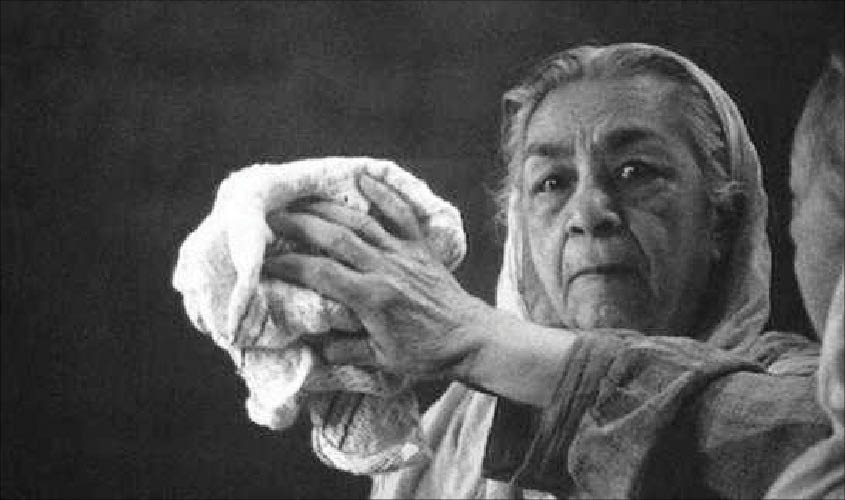Delhi recently hosted a three-day festival celebrating the life and career of the late Zohra Segal, known for her lasting contributions to the fields of dance, theatre and cinema, writes Anindya Tripathi.
It’s rare for an artist to shatter the very paradigm of a form. But Zohra Segal was able to achieve that with three separate forms: dance, theatre and cinema. Segal’s career spanned more than seven decades and came to an end only with her demise, on 10 July 2014. She is still fondly remembered for her sense of humour, grit and a smile that refused to die.
The Zohra Segal Festival of Arts, which concluded last week at Delhi’s India International Centre, was a three-day celebration of the indomitable spirit of this grand old diva of Indian cinema.
The festival marked a tribute to her three worlds—dance, theatre and cinema, which played an equally prominent part in Segal’s career. Sahibzaadi Begum Zohra Mumtazullah Khan began her career as a dancer in prominent choreographer Uday Shankar’s troupe. So appropriately, some of the songs once choreographed by her were performed at the Delhi event. Among the other highlights here was a photo exhibition (featuring images from Segal’s albums) and screening of her films Bhaji on the Beach and Partition.
Beginning on 19 April, the gathering of Segal’s friends, family and fans was addressed by her daughter, Kiran Segal, a Padma Shri recipient and eminent Odissi dancer. “My mother enjoyed theatre,” said Kiran, the festival curator and author of her biography, Zohra Segal: Fatty. Sharing anecdotes from her early life, Kiran shared how most of her childhood was spent at Mumbai’s Prithvi Theatre, where Zohra worked from 1945 to 1959 as a dance director.
In an old interview with Ashish Khokar about her Prithvi Theatre days, Zohra was quoted as saying, “I enjoyed it much and even though I never got the main roles because I wasn’t beautiful and sexy but I hung in there, till in 1962 I got a theatre scholarship to the UK. I went and never returned for 25 years.”
The 1950s was a golden decade for Zohra as a choreographer. In this phase of her career, she choreographed evergreen songs like “Le Ke Pehla Pehla Pyaar”, “Kahin Pe Nigaahein Kahin Pe Nishaana” and “Boojh Mera Kya Naam Re” among others. Later on, Zohra established her prowess as a dancer through her work in films like C.I.D and Nau Do Gyarah. Her fluid movements and focus on expressions through subtle gestures was what distinguished her from her contemporaries.
Kiran let us in on how, back in those days, the dance sequences in Hindi films were shot in multiple short takes, much to the frustration of the dancers involved, who often had to brave sweltering heat and make do with the limited resources at hand. But through all this, Zohra remained a disciplinarian, as described by her daughter. As a choreographer, she spent long hours on the stage, which maybe why the transition from dance to theatre had been such a seamless one for her.
The event’s second day was dedicated to varied art forms and began with a sitar recital by Shubhendra Rao, who is ranked among the top soloists in India. His performance for school children was dedicated to Zohra, and Rao, a protégé of the Bharat Ratna Pandit Ravi Shankar, has established himself as both a maestro of his own instrument and as someone who pushes the conventional boundaries of music. Hailed by critics and connoisseurs as a worthy successor to his guru’s tradition, Rao set the mood for Zohra’s critically acclaimed performance in the film Bhaaji on the Beach.
Written by Meera Sanyal and Gurinder Chadha, Bhaaji on the Beach is about nine Asian women who spend a day in a foreign land, feeling lonely. The story revolves around Ginder, who has taken refuge from her abusive criminal husband at a women’s hostel, and Hashida, who finds she is pregnant by her Afro-Caribbean boyfriend. At the beach, the women learn each other’s secrets, are insulted at a restaurant and, in one case, are taken shopping by an Englishman.
Even though Segal was well-known in Britain because of her presence on television shows, Bhaaji on the Beach provided her and Lalita Ahmed with their first feature roles. Exploring feminism and diaspora, this riveting performance by Segal was nuanced and layered with her own experience of being an Asian in the UK. Segal’s character in this film, Pushpa is initially disapproving but ends up prancing on the beach, despite her age.
The third and last day of the gathering began with a 110-minute masterpiece by Ken McMullen: a film called Partition, starring Segal, Saeed Jaffrey and Roshan Seth among others. As the name suggests, the movie depicts the turbulent years following Partition, when the Indian subcontinent witnessed the birth of two nations, India and Pakistan amid bloodshed and despair.
Adapted from Saadat Hasan Manto’s story “Toba Tek Singh”, McMullen’s film shows how a lunatic asylum in the city of Lahore becomes a mirror image of events unfolding in the political world, with the same actors playing both inmates and rulers. Zohra portrayed a character named “Everywoman” who wanders through spaces performing various menial tasks and commenting on the action like a Greek chorus, sometimes directly to the camera. Her face conveys the angst and pain experienced by women—especially in a sequence were we see her full face as she polishes a mirror, inviting us to a clearer view of the action.
The festival ended with a tribute to Segal’s legacy with a Sattriya performance by the Assamese dancer Sharodi Saikia. The dance-drama was a perfect homage to the star’s own style of choreography which borrowed elements from folk, classical and abhinaya style of performance.

